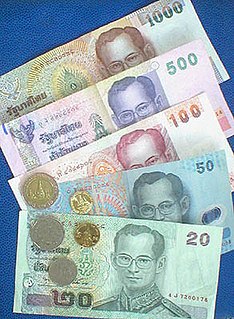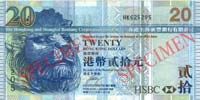
The krona is the official currency of Sweden. Both the ISO code "SEK" and currency sign "kr" are in common use; the former precedes or follows the value, the latter usually follows it but, especially in the past, it sometimes preceded the value. In English, the currency is sometimes referred to as the Swedish crown, as krona literally means "crown" in Swedish. The Swedish krona was the ninth-most traded currency in the world by value in April 2016.

The kwacha is the currency of Zambia. It is subdivided into 100 ngwee.

The złoty, which is the masculine form of the Polish adjective 'golden', is the currency of Poland. The modern złoty is subdivided into 100 groszy. The recognised English form of the word is zloty. The currency sign, zł, is composed of the Polish lower-case letters z and ł.

The Australian dollar is the currency of Australia, including its external territories: Christmas Island, Cocos (Keeling) Islands, and Norfolk Island. It is officially used as currency by three independent Pacific Island states: Kiribati, Nauru, and Tuvalu. It is legal tender in Australia. Within Australia, it is almost always abbreviated with the dollar sign ($), with A$ or AU$ sometimes used to distinguish it from other dollar-denominated currencies. The $ symbol precedes the amount. It is subdivided into 100 cents.

Baht is the official currency of Thailand. It is subdivided into 100 satang. The issuance of currency is the responsibility of the Bank of Thailand.

The Russian ruble or rouble is the currency of the Russian Federation, the two partially recognised republics of Abkhazia and South Ossetia and the two unrecognised republics of Donetsk and Luhansk. The ruble is subdivided into 100 kopeks.

The Iraqi dinar (Arabic: دينار, is the currency of Iraq. It is issued by the Central Bank of Iraq and is subdivided into 1,000 fils, although inflation has rendered the fils obsolete since 1990.

Sterling banknotes are the banknotes in circulation in the United Kingdom and its related territories, denominated in pounds sterling.

The Hong Kong dollar is the official currency of Hong Kong. It is subdivided into 100 cents. The Hong Kong Monetary Authority is the governmental currency board and also the de facto central bank for Hong Kong and the Hong Kong dollar.
The dinar is the currency of Libya. Its ISO 4217 code is "LYD". The dinar is subdivided into 1000 dirham (درهم). It was introduced in September 1971 and replaced the pound at par. It is issued by the Central Bank of Libya, which also supervises the banking system and regulates credit. In 1972, the Libyan Arab Foreign Bank was established to deal with overseas investment. Ali Mohammed Salem, deputy governor of Central Bank of Libya stated the exchange rate of Libyan dinar would be pegged to special drawing rights for one to three years, according to an interview to Reuters on 27 December 2011.

The Indian rupee is the official currency of India. The rupee is subdivided into 100 paise, though as of 2019, coins of denomination of 1 rupee is the lowest value in use. The issuance of the currency is controlled by the Reserve Bank of India. The Reserve Bank manages currency in India and derives its role in currency management on the basis of the Reserve Bank of India Act, 1934.

The Pakistani Rupee (Urdu: روپیه / ALA-LC: Rūpiyah; sign: ₨; code: abbreviated as PKR, is the official currency of Pakistan since 1948.

Banknotes of the Philippine peso are issued by the Bangko Sentral ng Pilipinas for circulation in the Philippines. The smallest amount of legal tender in wide circulation is 20 pesos and the largest is 1,000 pesos. The front side of each banknote features prominent people along with buildings, and events in the country's history while the reverse side depicts landmarks and animals.

The Australian pound was the currency of Australia from 1910 until 14 February 1966, when it was replaced by the Australian dollar. As with other £sd currencies, it was subdivided into 20 shillings, each of 12 pence.

The Guinean franc is the currency of Guinea. It is subdivided into one hundred centimes, but no centime denominations were ever issued.

The Gulden or forint was the currency of the lands of the House of Habsburg between 1754 and 1892, when it was replaced by the Krone/korona as part of the introduction of the gold standard. In Austria, the Gulden was initially divided into 60 Kreuzer, and in Hungary, the forint was divided into 60 krajczár. The currency was decimalized in 1857, using the same names for the unit and subunit.
The New Zealand ten-dollar note is a polymer banknote. It was issued in 1999 from the Reserve Bank of New Zealand. Two commemorative banknotes have also been issued. One of the notes was to celebrate New Zealand's Treaty of Waitangi and was released in 1990. Another polymer banknote was issued in 1999 to celebrate the new millennium.
The Brazilian real is the official currency of Brazil. It is subdivided into 100 centavos. The Central Bank of Brazil is the central bank and the issuing authority. The real replaced the Brazilian cruzeiro.
This page is based on this
Wikipedia article Text is available under the
CC BY-SA 4.0 license; additional terms may apply.
Images, videos and audio are available under their respective licenses.















